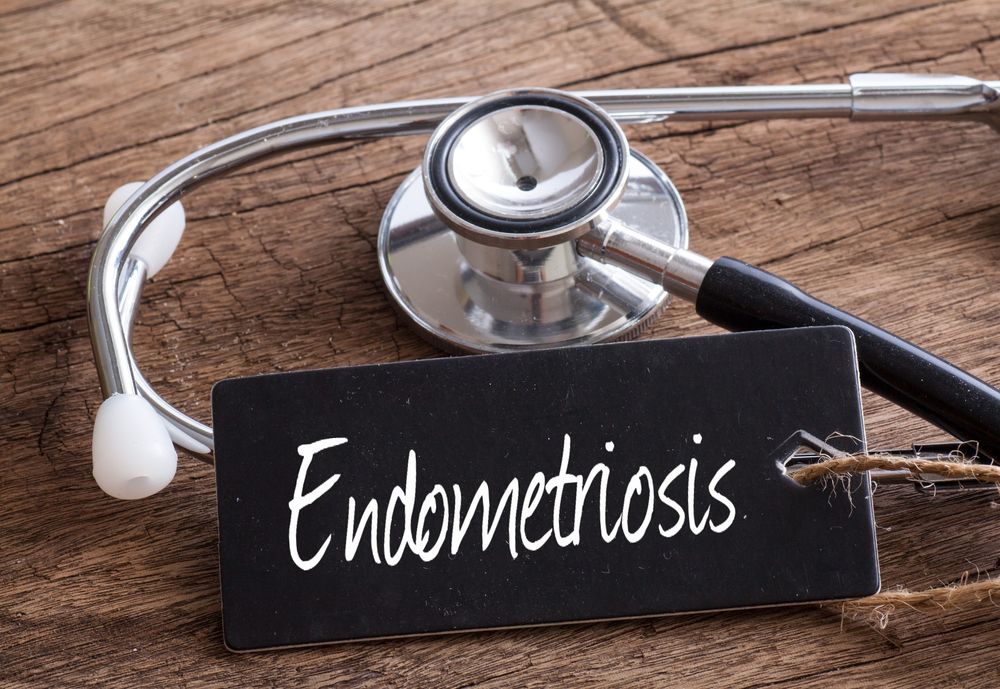When endometriosis is outside the pelvis
A recent study attempted to identify endometriosis patients who have extrapelvic disease through retrospective chart review utilizing extended criteria.
©Lemau Studio/shutterstock.com

Endometriosis is typically a pelvic disease. However, approximately, 12% of women with endometriosis have extrapelvic disease, including involvement of the diaphragm. A recent observational study attempted to identify patients with this condition through retrospective chart review utilizing extended criteria.
Diaphragmatic endometriosis, which appears to be caused by retrograde menstruation, typically does not produce symptoms. When it does, they may or may not occur in concert with menstruation, and may include pain in the chest pain, upper quadrant, and catamenial shoulder pain. Diaphragmatic endometriosis may also occur with thoracic endometriosis syndrome (TES), which includes catamenial pneumothorax or hemothorax, catamenial hemoptysis or intrathoracic endometriotic nodules. A new extended definition of TES, called thoracic/diaphragmatic endometriosis or TED, includes endometriosis-associated diaphragmatic hernia, catamenial chest pain, and endometriosis-related pleural effusion.
Using the extended TED criteria, ob/gyns and thoracic surgeons from Clinica Santa Maria in Santiago, Chile reviewed their experience with diagnosis and treatment of TES and diaphragmatic endometriosis.
The study included all patients with a diagnosis of diaphragmatic or thoracic endometriosis managed at the clinic between January 2010 and October 2017. Diagnosis was determined intraoperatively by surgeons and confirmed by pathology if possible. A total of five cases were identified.
Case 1 was a 36-year-old woman with one child and a history of pelvic endometriosis who was continuing to experience pain despite use of oral contraceptives (OCs). She underwent laparoscopy by gynecologic and thoracic surgeons working as a team, with partial cystectomy, uterosacral ligament resection, and full-thickness partial diaphragmatic resection after identification of deep pelvic endometriosis and right posterior hemidiaphragm endometriosis (which required mobilization of the liver for visualization).
Case 2 was a 42-year-old nullipara who had not been able to get pregnant. She had no history or symptoms of endometriosis, but had been treated previously for catamenial pneumothorax. Video-assisted thoracoscopic surgery (VATS) was performed and revealed diaphragmatic endometriosis, which was resected with repair of the diaphragm. Endometriosis was confirmed by analysis of tissue by the pathology department. After VATS, the patient became pregnant via in vitro fertilization.
Case 3 was a 26-year-old nullipara with pelvic endometriosis. Continuous OCs were failing to suppress her recurrent pelvic pain, dysmenorrhea, and dyspareunia. She also reported chronic right shoulder pain and dyspnea that worsened during menstruation. VATS revealed diaphragmatic endometriosis. Fulguration and resection were performed; the pathology report revealed fibrosis but not endometriosis. The patient spontaneously conceived 4 months after surgery and delivered a healthy child.
Case 4 was a 35-year-old nulliparous woman with chronic pelvic pain, severe dysmenorrhea and dyspareunia, and infertility. Laparoscopy identified endometriosis deep in the pelvis, which was resected, and in the hemidiaphragm, which was not resected. She became pregnant after surgery via intrauterine insemination.
Case 5 was a 40-year-old nullipara with a history of endometriosis and infertility. When she presented with epigastric and left flank pain, dyspnea, and nausea, she was diagnosed with a left diaphragmatic hernia and underwent VATS. The hernia was resected and the diaphragm was repaired. Pathology revealed endometriosis.
All patients had a continuing reduction in symptoms after surgery.
The researchers suggested that thoracic/diaphragmatic endometriosis has been underdiagnosed due to “a failure to properly examine the patient and evaluate the diaphragm during surgery.” They recommended maintaining a high level of suspicion for diaphragmatic endometriosis in all cases of pelvic endometriosis, and that all patients with cyclic thoracic symptoms in addition to pelvic symptoms be evaluated for diaphragmatic endometriosis as well as pelvic endometriosis. They also suggested having a thoracic surgeon on hand during surgery in cases where TED is suspected.
Understanding endometriosis: Impact on women's health, symptoms
November 13th 2023A recent study revealed that women with endometriosis not only face a mean delay of 7 to 11 years in diagnosis but also suffer from increased menstrual, mental health, and other pain symptoms, impacting their overall well-being and quality of life.
Read More
